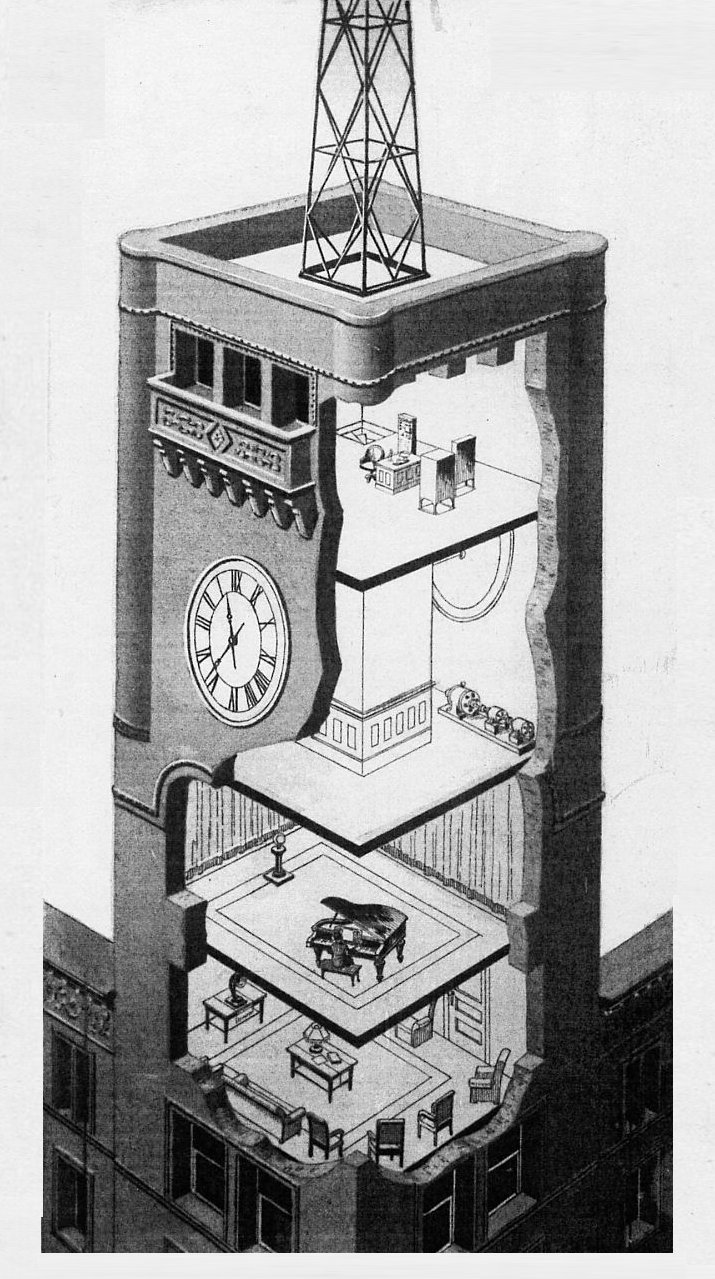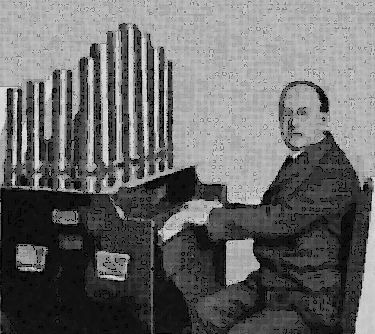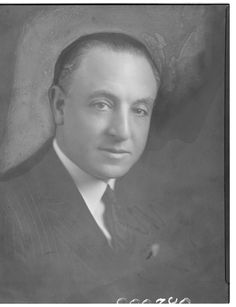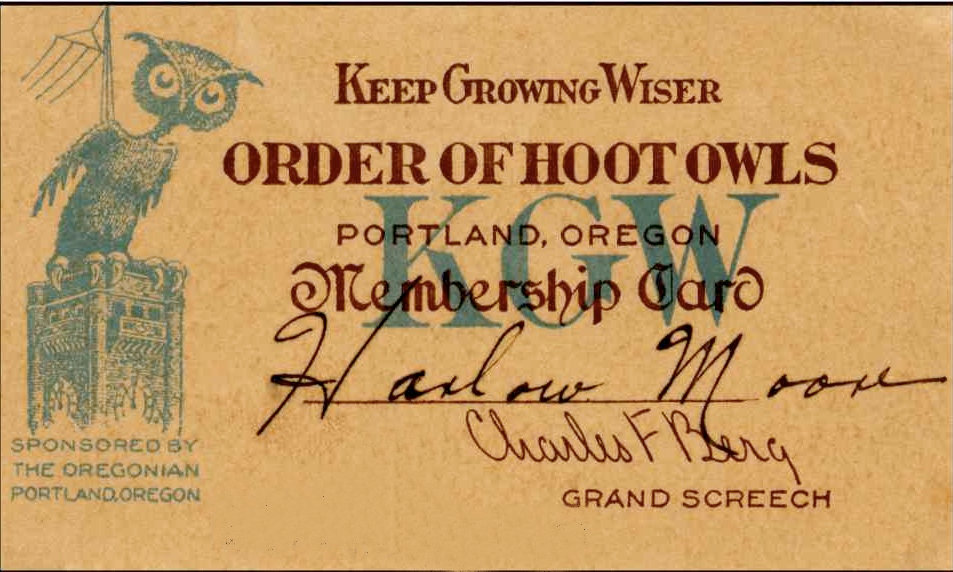America's history through the lens of 20th century broadcast media

Copyright 2020 Greenstone Media Consulting, LLC
Broadcast History
(Keep Growing Wiser Order of) Hoot Owls
KGW, Portland OR
1923 - 1933
NBC-Red
1928 - 1932 occasional
KAST, Astoria, OR
1930 - 1932
Occasionally carried on
KLX, San Francisco
1923 - 1933
NBC-Red
1928 - 1932 occasional
KAST, Astoria, OR
1930 - 1932
Occasionally carried on
KLX, San Francisco
Hoot Owl logo, 1924 - 1933




The Oregonian had earlier constructed an iconic
building on the corner of Sixth and Alder Streets,
the first steel-frame building wests of the
Mississippi, which featured a huge clock tower.
KGW's transmission equipment was located at the
top of the clock tower along with the station's
primitive "studio." At that time a radio transmitter
required two towers with the transmission wire(s)
stretched between them. One such tower was
located on the clock tower roof and the other on
the Northwestern Bank Building, a full block away,
with the transmission wires stretched between them high above Alder
Street.
While the program’s style evolved over time, the
Hoot Owls always used a somewhat formal
program structure arising from the program’s
founding concept as a club. The program opened
with a roll call of Hoot Owl officers followed by a
“business meeting” during which typical “club
business” was transacted including reading of
correspondence, answering questions,
acknowledging gifts and consideration of
membership applications. The Hoot Owls’ “rites”
at each meeting included singing of the official
Hoot Owl song played with Owlorgan (a circus
calliope) accompaniment by Bishop Sumner
(shown at the Owlorgan) and the riding of the
group’s imaginary mascot, a goat named Sweet William, by
newly-initiated members. Sunset Magazine,
which dubbed the Hoot Owls the “Laughter
Lodge of the Air,” described the Owlorgan as
“a music-making contraption that makes a
racket like nothing ever heard on land or
sea.” Following these rites, the program
unfolded with both semi-scripted and
extemporaneous patter from members of the
Degree Team.
Charles F. Berg (pictured left) presided over the
gathering as Grand Screech. Club “officers” were
known collectively as the Degree Team and each
held a humorous title. Some of the initial Degree
Team members were Episcopal Bishop of Oregon,
Walter F. Sumner, as Grand Sermon. Life insurance
agent Frank J. Sardam as Grand Scream, announcer
Dick Haller as Holder of the Grand Goat, pianist
Alex Riley as Grand Skipano, Guarantee Trust
Company salesman Jim Albert as Grand Shout,
power company executive Bill Strandborg as Grand Talon ill Hoffman as
Grand Silence.
There are no recordings of the be the Hoot Owls program which was
broadcast before the technology existed to record live radio programs.
The program might best be described as what NBC-TV’s Saturday Night
would have sounded like if it had been done on the radio -sixty years
before NBC conceived of the television program. The program also had a
slight Marx Brothers (who were Owls and occasionally appeared on the
program) quality although one listener described the Hoot Owls as “funny,
more cerebral than slap-the-knee funny. Sunset Magazine described the
show as making “no attempt to uplift or elevate the brows of the
audience; there is not even stereotyped announcing. It is a period of
frivolity and fun, a radio ‘get together’ of which the fan feels he is a
part” [emphasis in original].
Stylized as a mythical lodge, the program featured poetry, skits, music
and spontaneous tomfoolery all in the guise of a meeting of the Order – a
“secret society of the air.” Listeners submitted membership applications
and those who were accepted were
inducted in a formal on-air ceremony.
The Hoot Owls’ distinctive owl logo was
originally created by Oregonian
cartoonist C. L. Smith and lucky
inductees received highly-prized
membership cards featuring that symbol.
Smith’s role as Hoot Owls’ cartoonist
was later assumed by another Oregonian cartoonist and future member of
the Degree Team, “Tige” Reynolds. Successful membership applications
supposedly required demonstration of some type of significant talent or
accomplishment – but the term was generously interpreted.
Go to Next Page
